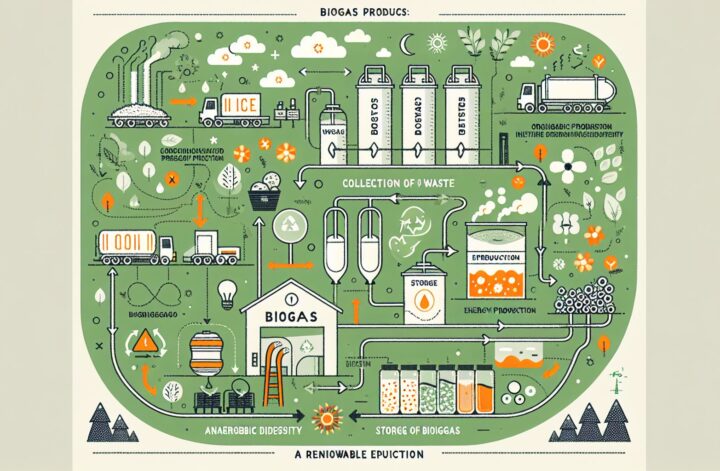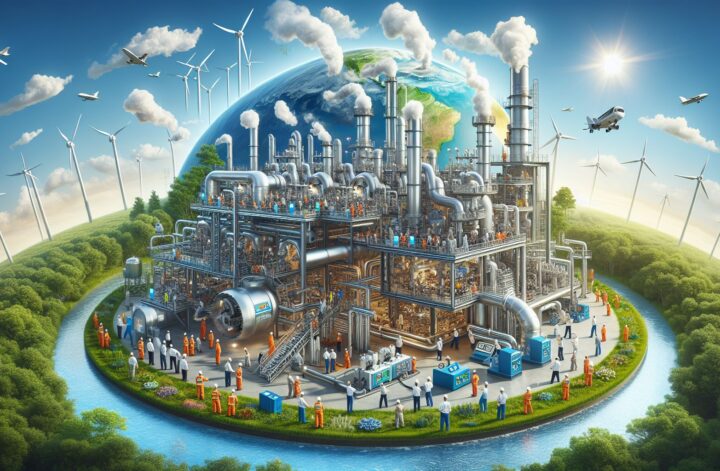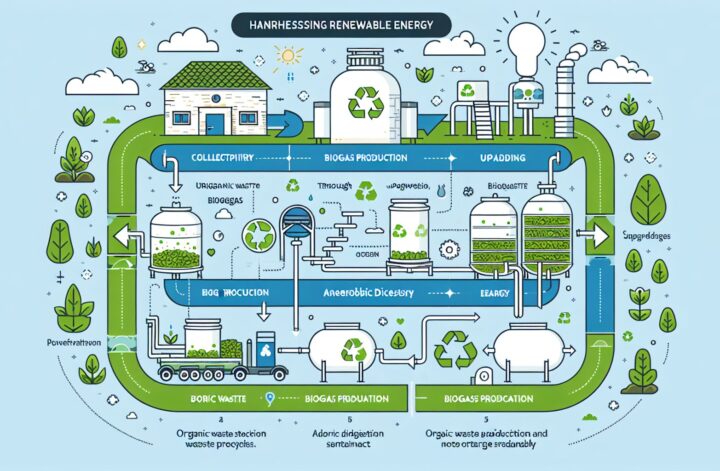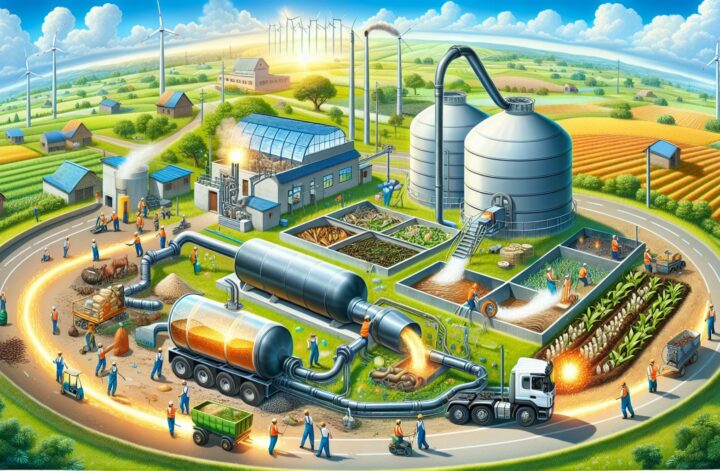With the growing concern over environmental pollution and the depletion of non-renewable resources, the demand for green, sustainable alternatives has garnered significant attention over the years. Among the various renewable energy forms, the importance of biogas as an alternative to fossil fuels has been increasingly acknowledged in recent years. Let’s dive into the intricate process of biogas production and its role in promoting renewable energy.
Biogas Production: Harnessing the Power of Waste
Biogas is produced from the anaerobic digestion of organic matter, particularly organic waste. This organic matter includes agricultural waste, municipal waste, plant material, and even sewage. The application of biogas extends to heating, electricity generation, and vehicle fuel, making it an instrumental component of sustainable energy systems[^1^].
Anaerobic digestion is the core process behind biogas production, involving a series of biological processes where microorganisms break down biodegradable material in the absence of oxygen. Throughout these processes – hydrolysis, acidogenesis, acetogenesis, and methanogenesis – complex organic materials are converted into simpler molecules, ultimately resulting in the production of a mixture of gases, mainly methane (CH4) and carbon dioxide (CO2), known as biogas[^2^].
Advantages of Biogas Production
One of the primary benefits of biogas production is that it transforms waste material into valuable energy resources, thereby alleviating the pressure on non-renewable energy sources. Moreover, the byproduct of the anaerobic digestion process, called digestate, serves as nutrient-rich biofertilizer, further promoting circular economy principles[^3^].
Using biogas also translates into greenhouse gas reduction as it prevents the emission of methane – a potent greenhouse gas – that would otherwise be released during the natural decomposition of organic material. Moreover, replacing conventional fuels with biogas leads to significant reductions in CO2 emissions.
Steps Involved in Biogas Production
Hydrolysis: The first step in anaerobic digestion is hydrolysis. During this step, complex organic compounds – carbohydrates, fats, and proteins – are broken down into simpler molecules by hydrolytic bacteria.
Acidogenesis: The products of hydrolysis are then transformed into volatile fatty acids and other compounds during the acidogenesis step, carried out by acidogenic bacteria.
Acetogenesis: These shorter molecules are further broken down into acetic acid, carbon dioxide, and hydrogen during acetogenesis, facilitated by acetogenic bacteria.
Methanogenesis: The final and crucial step in anaerobic digestion is methanogenesis, in which methanogens convert these products into methane, carbon dioxide, and water.
Factors Influencing Biogas Production
The efficiency and effectiveness of biogas production depend on several factors, including the nature and composition of the substrate, temperature conditions (mesophilic or thermophilic), pH level, nutrient presence, and microbial population. Undetected, these factors can inhibit the anaerobic digestion process, leading to a significant reduction in biogas production[^4^].
Emerging Trends and Future Directions
Given the sustainable and economic benefits of biogas, continuous efforts are being made to optimize its production and usage. High-rate anaerobic digestion systems and biogas upgrading for higher methane content are just a few examples of recent research directions.
As we continue to exploit the renewable power of biogas, there’s a spectrum of possibilities that could not only redefine our energy systems but also help us achieve our fundamental sustainability objectives.
Final Thoughts
Biogas production represents an important component of our transition towards a more sustainable, circular economy. By transforming waste to energy, it holds the potential to alleviate our reliance on fossil fuels, turn waste management into a profitable enterprise, and contribute significantly to our planet’s health and well-being.
[^1^]: Anaerobic Digestion | Department of Energy (energy.gov)
[^2^]: Anaerobic digestion – Process and products: Natural Resources Canada (nrcan.gc.ca)
[^3^]: The many benefits of biogas and anaerobic digestion (recycleforgreatermanchester.com)
[^4^]: Optimization and inhibition of anaerobic digestion of livestock manure and straw – ScienceDirect




